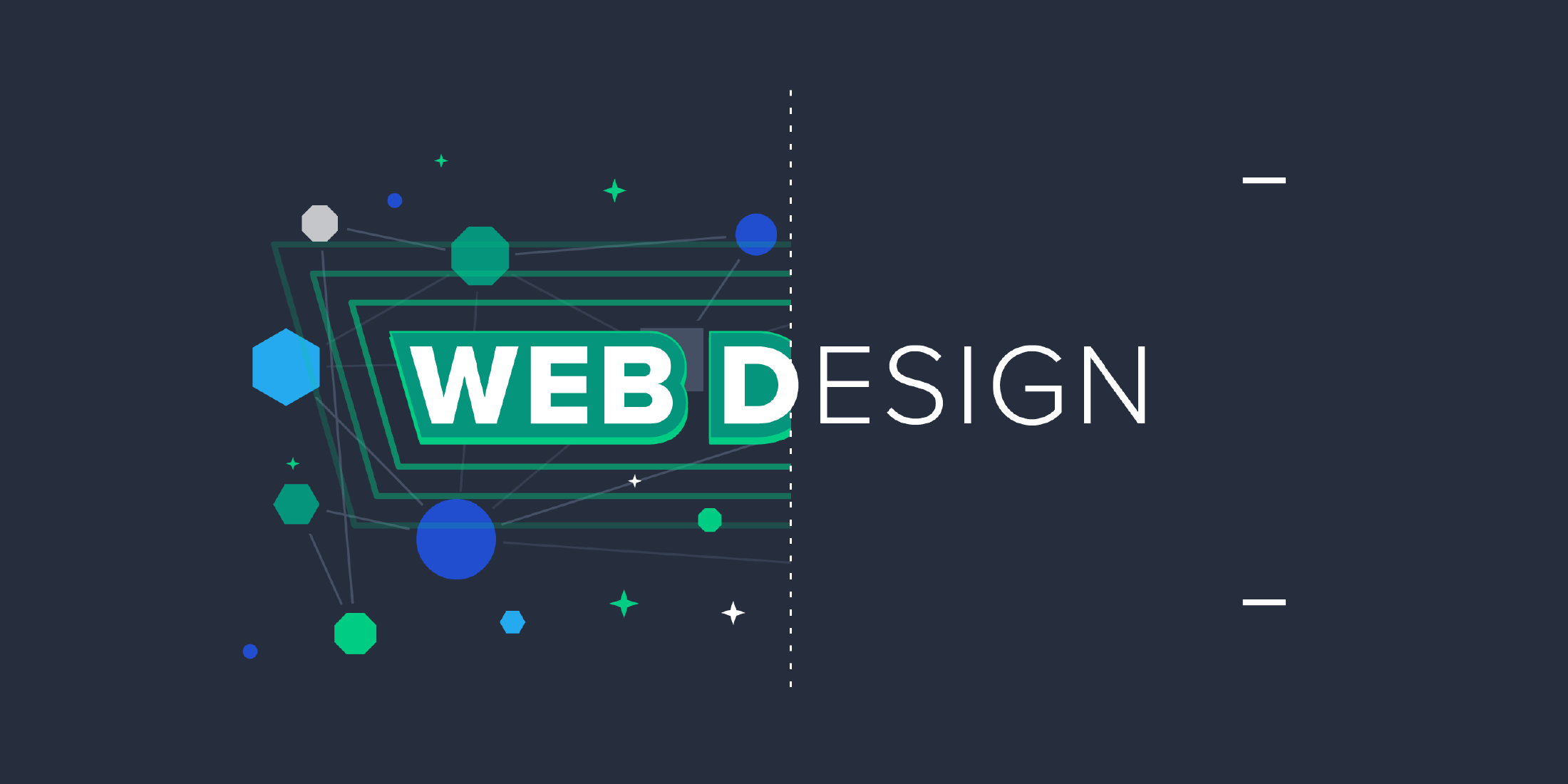All Categories
Featured
Table of Contents
- – What Is Web Design? The Ultimate Guide To Webs...
- – Web Page Design: A Comprehensive Guide - Adob...
- – Trajectory: Atlanta Web Design Company Tips a...
- – Awwwards - Website Awards - Best Web Design T...
- – Law Firm Website Design, Attorney Web Design,...
- – Awwwards - Website Awards - Best Web Design T...
- – Web Design Vs. Web Development - Upwork Tips...
- – Web Design Projects - Behance Tips and Tricks:
- – St Louis Seo Company - St Louis Web Design A...
- – Website Design - Best Ecommerce Web Design B...
- – Web Design - Uci Division Of Continuing Educ...
What Is Web Design? The Ultimate Guide To Website Design ... Tips and Tricks:
Quick summary Functionality and the utility, not the visual style, determine the success or failure of a site. Since the visitor of the page is the only person who clicks the mouse and therefore decides whatever, user-centric design has developed as a basic approach for successful and profit-oriented website design - web design frederick md.
and the energy, not the visual design, determine the success or failure of a website. Because the visitor of the page is the only individual who clicks the mouse and for that reason chooses whatever, user-centric style has actually become a standard approach for effective and profit-oriented website design. After all, if users can't use a function, it may too not exist.
g. where the search box must be put) as it has actually currently been performed in a number of articles; rather we focus on the techniques which, used properly, can result in more advanced style decisions and streamline the process of perceiving presented info. Please observe that you might be thinking about the usability-related posts we have actually published before: Concepts Of Great Site Design And Efficient Web Style Standards, In order to use the principles effectively we first need to understand how users interact with websites, how they think and what are the fundamental patterns of users' behavior.
Web Page Design: A Comprehensive Guide - Adobe Xd Ideas Tips and Tricks:
Visitors glimpse at each brand-new page, scan some of the text, and click on the first link that captures their interest or slightly looks like the thing they're searching for. There are big parts of the page they do not even look at. Many users look for something fascinating (or beneficial) and clickable; as quickly as some promising prospects are found, users click.
If a page offers users with top quality content, they want to jeopardize the content with ads and the design of the website. This is the reason not-that-well-designed sites with high-quality content gain a lot of traffic over years. Content is more crucial than the style which supports it.

Really basic concept: If a site isn't able to fulfill users' expectations, then designer stopped working to get his job done effectively and the business loses cash. The greater is the cognitive load and the less intuitive is the navigation, the more prepared are users to leave the website and search for alternatives.
Trajectory: Atlanta Web Design Company Tips and Tricks:
Neither do they scan website in a direct fashion, going sequentially from one website area to another one. Instead users satisfice; they select the very first sensible option. As quickly as they find a link that appears like it may lead to the goal, there is a very good opportunity that it will be instantly clicked.
It does not matter to us if we comprehend how things work, as long as we can use them. If your audience is going to act like you're creating signboard, then design fantastic signboards." Users wish to be able to manage their internet browser and count on the consistent data presentation throughout the website.
If the navigation and website architecture aren't intuitive, the number of question marks grows and makes it harder for users to comprehend how the system works and how to receive from point A to point B. A clear structure, moderate visual hints and easily identifiable links can help users to discover their course to their aim.
Awwwards - Website Awards - Best Web Design Trends Tips and Tricks:

Since users tend to check out websites according to the "F"-pattern, these three declarations would be the very first components users will see on the page once it is loaded. The design itself is basic and intuitive, to understand what the page is about the user needs to search for the answer.
When you have actually achieved this, you can communicate why the system works and how users can take advantage of it. People won't use your website if they can't find their way around it. 2. Do Not Waste Users' Perseverance, In every task when you are going to provide your visitors some service or tool, try to keep your user requirements very little.
Novice visitors want to, not filling long web types for an account they might never use in the future. Let users explore the website and discover your services without forcing them into sharing personal information. It's not reasonable to require users to enter an e-mail address to evaluate the function.
Law Firm Website Design, Attorney Web Design, Lawyer ... Tips and Tricks:
Stikkit is an ideal example for an easy to use service which needs practically absolutely nothing from the visitor which is inconspicuous and soothing. Which's what you desire your users to feel on your web website. Apparently, Termite requires more. The registration can be done in less than 30 seconds as the type has horizontal orientation, the user does not even need to scroll the page.
A user registration alone suffices of an impediment to user navigation to minimize incoming traffic. 3. Handle To Focus Users' Attention, As sites supply both static and dynamic material, some elements of the user interface bring in attention more than others do. Undoubtedly, images are more captivating than the text simply as the sentences marked as vibrant are more appealing than plain text.
Focusing users' attention to particular areas of the site with a moderate usage of visual components can help your visitors to get from point A to point B without thinking of how it actually is expected to be done. The less enigma visitors have, the they have and the more trust they can establish towards the business the website represents.
Awwwards - Website Awards - Best Web Design Trends Tips and Tricks:
Aim For Function Direct exposure, Modern web styles are typically criticized due to their method of guiding users with visually appealing 1-2-3-done-steps, large buttons with visual effects and so on. From the style point of view these components in fact aren't a bad thing.
The site has 9 main navigation choices which are visible at the very first glimpse. What matters is that the material is well-understood and visitors feel comfortable with the method they communicate with the system.
Instead a price: simply what visitors are looking for. An optimum service for reliable writing is touse short and concise phrases (come to the point as rapidly as possible), usage scannable layout (classify the material, use multiple heading levels, utilize visual elements and bulleted lists which break the circulation of consistent text blocks), use plain and unbiased language (a promo doesn't require to sound like ad; offer your users some affordable and unbiased factor why they need to utilize your service or stay on your website)6.
Web Design Vs. Web Development - Upwork Tips and Tricks:
Users are rarely on a site to delight in the design; additionally, in many cases they are searching for the information despite the design - web design frederick md. Pursue simplicity instead of intricacy. From the visitors' viewpoint, the very best website style is a pure text, without any advertisements or more content obstructs matching precisely the question visitors used or the content they have actually been trying to find.
Finch clearly provides the details about the website and provides visitors an option of alternatives without overcrowding them with unneeded material. Not just does it assist to for the visitors, however it makes it possible to perceive the information presented on the screen.
Complex structures are more difficult to check out, scan, analyze and work with. If you have the option between separating 2 design sectors by a noticeable line or by some whitespace, it's usually much better to use the whitespace solution. (Simon's Law): the better you manage to offer users with a sense of visual hierarchy, the easier your material will be to view.
Web Design Projects - Behance Tips and Tricks:
The very same conventions and rules must be used to all elements.: do the most with the least amount of hints and visual aspects. Clearness: all parts should be created so their meaning is not ambiguous.
Conventions Are Our Good friends, Traditional design of website components doesn't result in an uninteresting website. In fact, as they minimize the finding out curve, the requirement to find out how things work. It would be an use nightmare if all websites had various visual presentation of RSS-feeds. That's not that different from our routine life where we tend to get used to standard principles of how we organize data (folders) or do shopping (placement of products).
understand what they're anticipating from a website navigation, text structure, search placement etc. A case in point from functionality sessions is to translate the page in Japanese (assuming your web users do not understand Japanese, e. g. with Babelfish) and offer your use testers with a job to discover something in the page of various language.
St Louis Seo Company - St Louis Web Design And Internet ... Tips and Tricks:
Steve Krug suggests that it's better to, but take benefits of conventions when you don't. 10. Test Early, Test Often, This so-called TETO-principle needs to be used to every website design task as functionality tests often offer into considerable problems and concerns related to a provided design. Test not far too late, not too little and not for the incorrect factors.
Some essential indicate remember: according to Steve Krug, and screening one user early in the project is better than testing 50 near completion. Accoring to Boehm's very first law, mistakes are most frequent throughout requirements and style activities and are the more costly the later they are gotten rid of.
That means that you design something, test it, repair it and after that test it once again. There may be issues which haven't been discovered during the first round as users were almost obstructed by other issues. use tests. Either you'll be indicated the problems you have or you'll be indicated the lack of significant style defects which remains in both cases an useful insight for your project.
Website Design - Best Ecommerce Web Design By Shopify Tips and Tricks:

This holds for designers. After you've worked on a website for few weeks, you can't observe it from a fresh point of view any longer. You know how it is constructed and for that reason you know exactly how it works you have the knowledge independent testers and visitors of your site would not have.
It can be connected to other locations such as graphic style, user experience, and multimedia arts, however is more aptly seen from a technological perspective. It has actually become a large part of individuals's everyday lives. It is tough to imagine the Web without animated graphics, different designs of typography, background, videos and music.

During 1991 to 1993 the Web was born. Text-only pages could be viewed using an easy line-mode web browser. In 1993 Marc Andreessen and Eric Bina, developed the Mosaic web browser. At the time there were numerous browsers, however the majority of them were Unix-based and naturally text heavy. There had actually been no integrated technique to graphic style elements such as images or sounds.
Web Design - Uci Division Of Continuing Education Tips and Tricks:
The W3C was developed in October 1994 to "lead the Internet to its complete capacity by developing common procedures that promote its development and ensure its interoperability." This prevented any one company from monopolizing a propriety web browser and programming language, which might have altered the impact of the Web as a whole.
As this has happened the technology of the web has likewise moved on. There have also been significant modifications in the way people use and access the web, and this has altered how sites are created.
Learn more about Lovell Media Group LLC or TrainACETable of Contents
- – What Is Web Design? The Ultimate Guide To Webs...
- – Web Page Design: A Comprehensive Guide - Adob...
- – Trajectory: Atlanta Web Design Company Tips a...
- – Awwwards - Website Awards - Best Web Design T...
- – Law Firm Website Design, Attorney Web Design,...
- – Awwwards - Website Awards - Best Web Design T...
- – Web Design Vs. Web Development - Upwork Tips...
- – Web Design Projects - Behance Tips and Tricks:
- – St Louis Seo Company - St Louis Web Design A...
- – Website Design - Best Ecommerce Web Design B...
- – Web Design - Uci Division Of Continuing Educ...
Latest Posts
Modern Website Designs - Best Web Page Designers Tips and Tricks:
The Top 10 Most Important Elements Of A Website Design Tips and Tricks:
What Does A Web Designer Do? - Careerexplorer Tips and Tricks:
More
Latest Posts
Modern Website Designs - Best Web Page Designers Tips and Tricks:
The Top 10 Most Important Elements Of A Website Design Tips and Tricks:
What Does A Web Designer Do? - Careerexplorer Tips and Tricks: